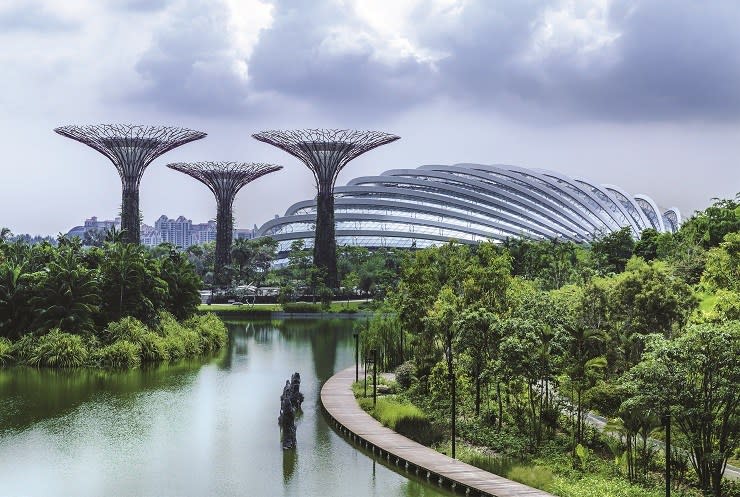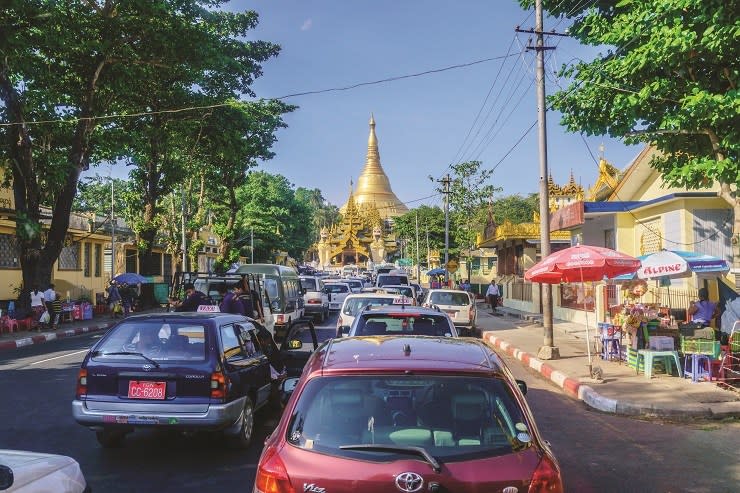See how landscape architecture is shaping developments all over Asia
Built on reclaimed land near Seoul, Songdo bills itself as a city of the future. Image: la’s scene / Shutterstock.com
Environmental woes are inspiring a new wave of design that can offset energy-use while creating more liveable cities.
By Oliver Irvine
Songdo in South Korea bills itself as a city of the future.
Built on 600 hectares of reclaimed land outside of Seoul, it is a blueprint for urban development in the 21st century, making use of every available technology while preserving an incredible 40 percent of its footprint for green space.
Songdo’s green city vision reflects how important landscape architecture is for developing sustainable urban environments, but few architects are blessed with a blank sheet of paper on which to balance the demands of city living with nature.
Instead, landscape architects across the region are developing their own measures to bring the natural environment into existing urban areas.
“Mankind has a desire to be associated very closely with nature at all times,” says Professor Philip Cox, an Australian landscape architect whose firm, COX Architecture, is responsible for some of Singapore’s landmark public projects, including the Helix Bridge and the Marina Bay Waterfront Promenade. “Nature is the heart of quality of life itself. There are very few people who are not entranced by nature and the diversity of botany in the world.”
This, he says, is driving a newfound awareness for the importance of landscape architecture demonstrated by the increasing requests from developers and governments – more so in Asia than the West – for green buildings that celebrate nature.
“It is very exciting, adds Cox. “Even if the cost is 10 to 15 percent more than making a regular building, they see using plant material in buildings as valuable because when you live in a high-rise you don’t have connection to the ground. And it’s a great selling point.”
Singapore’s Gardens by the Bay has successfully used landscape architecture as a primary tourist attraction.
Hong Kong, Singapore and Tokyo are regarded as cities at the forefront of prioritising green environments.
Singapore, in particular, has been praised for its green vision of a city. There are government subsidies in place to encourage developers to embrace energy-saving materials and incorporate features like vertical and roof gardens, while large-scale civic projects like Gardens by the Bay use landscape architecture as a way of generating extra tourism.
The Lion City’s residential projects are also at the forefront of landscape architecture.
Ann Teo, Managing Director of COEN Design International, is the landscape architect behind Tree House, a condominium project which holds the Guinness World Record for having the largest vertical green wall in the world. It’s a feature, which is not just aesthetically pleasing but also, according to its designer, incredibly ecologically efficient.
“Green walls never radiate heat; they keep what’s behind them very cool,” says Teo. “You can use landscaping like this to breathe in the heat on the side of the building where it matters most. It’s like putting on a jacket that protects you from the sun.”
The capacity of landscape architecture to offset energy use will increasingly govern how it is used across Asia. Its effectiveness, however, largely relies on expert understanding of a project’s relationship with its immediate environment.
“Intelligent landscaping is very effective at reducing a project’s energy footprint,” says Christian Dierckxsens, Landscape Design Director at the Hong Kong-based Atkins Global architecture firm. “But it requires more than the random integration of green building measures. For example, a large tree within a building lobby is not necessarily contributing to the reduction of the building’s energy footprint.”
Bangkok, a city traditionally behind Singapore in its environmental initiatives, has recently seen its own buildings, which prioritise green space. The new Emquartier shopping centre (pictured below) with its vertiginous gardens and open-air communal spaces is a far cry from the shopping malls Bangkok was building just five years ago, while cascades of greenery are increasingly seen on the facades of condominiums.
“Developers in Bangkok are seeing how spending on the building alone does not have enough impact; landscape can be the selling point that distinguishes their project,” says Yossapon Boonsom, one of the founding directors of Shma Designs, the landscape architecture firm behind Ashton Morph 38, a luxury condominium hailed as one of the greenest in Bangkok.
Bangkok’s Emquartier mall. This spiral design was created by renowned living wall designer Patrick Blanc.
“But I would like to see developers see landscaping as more than a selling point. Developers should combine the marketing elements of green space with environmental mitigation,” adds Yossapon. “Thailand instead tries hard in styling the garden and beautifying the outside areas, but we should move forward and see how we can use natural environments efficiently and to provide experiences and activities.”
Outside of Bangkok and Singapore, emerging Asian cities like Phnom Penh and Yangon are facing their own urban landscaping challenges, although these are usually very different from those faced by more-developed regional counterparts.
Emerging cities such as Yangon could benefit from better managed urban planning.
“When you have emerging markets like Myanmar and Cambodia, they are in a hurry to just build houses,” says Teo. “Not many developers articulate the landscape and not many people appreciate it in that way.”
“Such cities can definitely learn and capitalise on the successes or mistakes of Bangkok, Hong Kong and Singapore,” adds Dierckxsens, pointing to existing infrastructure opportunities in less-developed cities which they are yet to develop.
Though the obstacles which landscape architects need to overcome are different throughout the region, there is one thing, according to Dierckxsens, that unites every market in Asia, and which intelligent landscape architecture needs to address.
“Growing urbanisation is a challenge for all cities,” he says. “We are all facing the increased consequences of climate change, which has to be absorbed during development.”
To combat population growth, the future will almost certainly see more brand new cities like Songdo, which are built from day one to mitigate climate change. But with the right governmental policies and a proper foresight from investors, the future for Asia’s existing urban centres can be just as green.
This story was originally published on property-report.com and is reproduced as part of an editorial partnership between PropertyGuru.com and Property Report.

 Yahoo Finance
Yahoo Finance 



